December 8th, 2024A helping hand for Balinese mums & bubs

News of whether the Bali Nine drug smugglers would be brought home to Australia seized the headlines. Here in Daylesford, however, a harsh side to Bali was revealed to Daylesford Rotarians.
Single pregnant women in Balinese society are shunned due to strict religious beliefs and may be thrown out of their village. Before CCTV removed anonymity, they would often leave their babies outside hospitals or police stations. Now they abandon them in rice paddies where they may die.
This picture of life behind the happy-go-lucky world seen by Australian tourists was explained by Karen Sims, who for nine years has spent half her time in Bali helping these women when not running a communications company in Melbourne.
A local, Yulia Sukanta, stepped in to help and started a Mother and Baby House. From then, says Karen, “it just grew”.
A small house became bigger. Soon the main house held 18 mothers including a 12-year-old, a 15-year-old and two aged 17. A 14-year-old had a second child. Last year a 17-year-old girl was not allowed to finish school because she was pregnant. Pleas to the school were futile. The father of her child is a repeat offender.
“The mothers can’t work, and their kids can’t go to school because they don’t have a birth certificate,” says Karen.
Karen says they keep in touch with the 58 mothers they have helped, including trekking into the mountains to see them. Some of the babies have been fostered or adopted, which is difficult.
Also, there is a stigma attached to babies of a different colour. “There is zero government help and, as for the rest, the (Balinese) rich are staying rich and the healthy are staying healthy.
“Bali is no longer cheap. There are a few wealthy expats and self-funded retirees. “All this could be changed,” says Karen, ”if the men would just wear a bloody condom. The girls are sensible, although many didn’t know about condoms”.
“Young men say, ‘My dad says I’m not a man if I wear a condom’. Others are too embarrassed to buy them.”
Add to this the diseases passed between men and sex workers, which the men pass on to their wives or girlfriends. As if all this were not bad enough there is a high level of domestic violence. “We go to villages to talk about the bashing of women.”
Again, this can be difficult to reverse. Keeping the project going is always hard, Karen says. “We’re down to the wire financially…we’re always scraping by.”
Backing her is Daylesford born-and-bred Glenda Rozen, who regularly takes infant formula powder to Bali and is involved in fund-raising with Australian expatriates in the Bali International Women’s Association.
Glenda, pictured above, returns to Bali after Christmas. Daylesford Rotarians have also come on board and raised $2500 for the project. Link: www.balimotherandbabyhouse.org
A Fromage & Fundraise will be held at Gloria’s Wine Bar, Camberwell today, Sunday December 8 from 2.30pm.
Words: Kevin Childs | Image: Supplied
November 21st, 2024Tommy’s amazing life
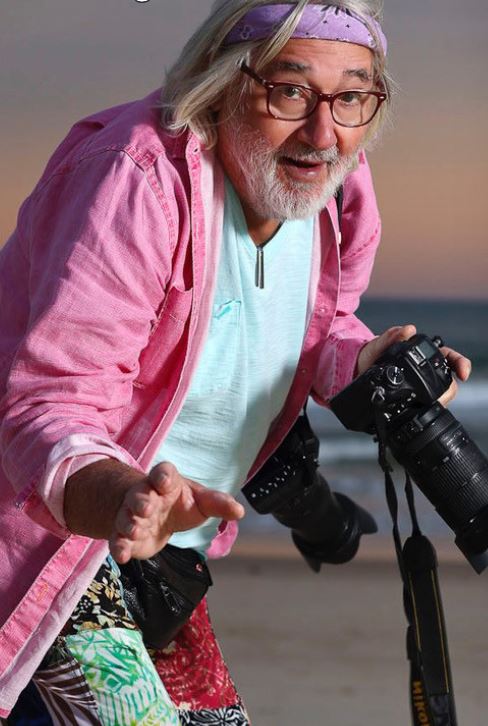
The scars are still there. Not only mentally from the cruel abuse Richard “Tommy” Campion and his sister suffered in a home after being abandoned when young but also on his back from beatings.
Their parents didn’t want them, he says. Their mother “caught a train to somewhere”. A couple of days later their father left them in a children’s home never to be seen again.
Somehow, Tommy emerged after 14 years to eventually carve out a career as an award-winning news photographer. Now he and his partner Marilyn have left the traffic, crime and high-rises of the Gold Coast for the tranquillity of Hepburn Springs.
But at 76 he continues a 20-year campaign to bring to justice those responsible for the whippings, bashings, floggings and starvation by staff at the Church of England North Coast Children’s Home in Lismore, NSW.
A brief reprieve did come when his sister Suzanne, who is two years older than him, was adopted by a family when aged eight, mainly he believes, to look after their seven children.
“I fretted and so I was sent to join her. That family reckoned I had been raised by animals, so a few weeks later I was sent back to the home and didn’t see my sister for eight years.
“When we did meet there was no heavy connection. We thought about each other, but the love was not there. She was far more emotional than me, yet later we came to love each other dearly.”
To him, what happened at the home was sexual, psychological and physical abuse. Anglican Ministers used leather belts on children who were cheeky, had not made their beds properly, or for stealing food to supplement the gruel.
Frightened, skinny, asthmatic and pigeon-chested, he was found a job in a hardware store at age 16. With the help of a matron, the home had “come good” the year before he left.
Now he was mixing paint, “a tough gig”, while paying board at the home. He laughs at the contradiction.
Next, he spotted a newspaper ad for a cadet photographer who “must be keen and outgoing”. He had probably only taken a couple of snaps in his life, so he borrowed some and, to his amazement, got the job.
Even then, he thought he was letting down those in the home because they had found him the hardware job.
Joining the Northern Star in Lismore aged 17 was exciting, even though it meant mixing chemicals, proofing and filing.
“I learnt more in a month than I had from age two to 16. I learnt how to talk to people, look them in the eye, react, be responsible.
“Somehow, I got ambition, yet I was nearly sacked so many times for not dressing properly. I couldn’t wear a tie because we were choked in the home. When I told the pictorial editor this after he retired, he cried.”
The new-found ambition had him trying for about seven months to join Queensland’s major paper, the Courier Mail.
“I was told I would never get a job there until someone died. And then someone did.”
He spreads his hands to show the width of the pages of this big broadsheet, excitedly telling of the arrows down the page showing where a car went off a cliff.
“I learnt a helluva lot. And I also had a job lined up at The Australian.”
In the then traditional way, he was interviewed in a pub by three photographers. Not only did he get this job but he worked for six other Murdoch papers while based in Brisbane.
“It was the bees’ knees…ever heard about knocking a bastard down and he gets up again?”
These were amazing, thrilling newspaper days, which for him included getting grabbed by security when he got too close to the future King Charles at a media scrum.
“I was so pleased to go to work. I hated taking holidays. Crimes, pop stars, The Beatles, Joe Cocker, Johnny Cash, movie stars such as Sammy Davis Jr and Frank Sinatra, important news events I shot them all, as well as an action shot of a dog chasing a cat.”
He turned down the offers of jobs in Sydney because he was married and had a daughter to care for. There are now two grandsons who shine at sport and music.
When he was able to leave Brisbane a freakish encounter stopped him. When he paused at traffic lights he was spotted by a sports editor who asked what he was up to.
This editor was scathing of Sydney and talked Tommy into working two days a week for the Gold Coast Bulletin, which led to five years in News Ltd’s bureau there covering murders, kidnappings, fashion, sport, social and huge court cases.
His national award for spot news came when, thanks to an alert reporter who spotted the dog squad, he zoomed in on one of three child kidnappers who firstly wanted a $1million ransom, halved that and reduced it to $250,000, but was then caught.
But a court story led to disaster. His photo of alleged prostitutes, some masked, supporting a charged nightclub owner outside a court, was not used. Tommy’s instructions to ignore a picture of three college girls going into the court, which was on the same roll of film he sent in, was disregarded. The newspaper mistakenly identified the girls as prostitutes.
Within two days he was gone. No one would talk to him. He was in despair. No newspaper would use him for a few years.
Much later, he was exonerated when found that the pictorial editor, who sacked him and ruined his career, had written the erring caption.
Tommy was reduced to living on handouts in a two-roomed house. The pain of abuse still hurt, so he wrote a five-page letter to the Royal Commission on Institutional Child Abuse, telling of the nightmares he suffered and wondering about the other children and how they were coping.
The response was an apology from a leading Minister who said that Tommy had “lived in an Anglican home which should have been safe, but clearly was not.”
Tommy adds: “I was believed and asked to fill out a form and would get $78,000 compensation.” He refused the offer because others had to know that they had the right to compensation if they had been abused.
Tommy put advertisements in 20 papers asking for anyone who lived in the home to get in touch. His phone rang off the hook.
“The church then began fighting back and the fight went on and on, causing abuse again.”
So powerful is the church, he said, that only the Royal Commission was able to order proper compensation.
He began to cry as he told of giving evidence for most of a day of the three-week hearing.
“The church lied, even at the Royal Commission.” He does not hold back. “They are a sneaky, nasty, hypocritical pack of bastards.”
In an effort to have the Bishop who was in charge defrocked he has written hundreds of letters, becoming an advocate for about 70 people.
“I got a Bishop and a Minister kicked out of the church, but they were still able to call themselves Bishop and Reverend.
They were not involved in the abuse but in the cover-up and failed to act within church rules.
“If the church had been like a church and said sorry and acted it would have been different. They wouldn’t have ended up in the Royal Commission.”
And there may not have been the deaths, jail terms and the like for those from the home.

Although embarrassed, he stood for two days outside the Anglican church in Brisbane with a protest sign, denouncing the abuse and failure of duty of care, while copping abuse from some passers-by.
After waiting six years he got in to see the leader of the Anglican Church of Australia six times. His letter writing campaign continues, and so does his photography, now with gentler pictures, such as kangaroos nearby, interesting people and serene scenes.
He and Marilyn share their house with their two cats, Garry Barry and Alice.
“As soon as I walked into the house here, I knew this was home.”
Words: Kevin Childs | Image: Contributed
November 9th, 2024Help is at hand for seniors feeling isolated
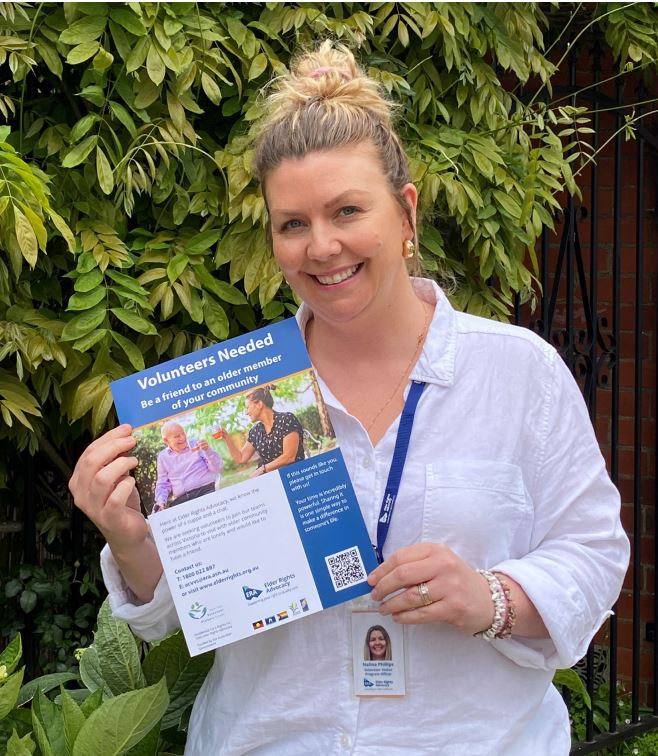
“Ah, look at all the lonely people.” The Beatles.
Loneliness can be savage on aged people. There is, however, a way to ease it.
Creswick’s Nalina Phillips, pictured, is working with Elder Rights Advocacy to build relationships with local groups, organisations and aged care homes on a scheme to break down isolation.
Starting with two local volunteers who visit four people in Creswick and Trentham, she has taken on two more volunteers from Clunes. As well, she is looking for local people who are feeling lonely or isolated.
Besides easing the burden of loneliness on the aged, the scheme also gives volunteers a sense of purpose and meaning, improving their confidence through knowing that they are giving back to the community.
Volunteers “genuinely love visiting their matched older people and hearing all the amazing stories about how they grew up and the lives they lived,” she says.
The volunteers learn of the not-for-profit program through Seek Volunteer, Facebook groups and community events.
The scheme has been running for almost more than six years. Regular visits from volunteers can help to both improve quality of life and make older people feel less isolated.
Visits are available to anyone who is socially isolated or gets government-subsidised residential aged care or Home Care Packages, including approved care recipients or those on the National Priority System for residential or home care packages.
Loneliness can affect some older people because they feel cut off from their culture and heritage, have little contact with friends or relatives, are immobile and so unable to take part in social or leisure activities, or feel different in some way.
The scheme also focuses on the needs of older people from particular linguistic, cultural and complex vulnerability backgrounds who may be at greater risk of alienation.
These include people from Aboriginal and Torres Strait Islander communities, and those who live in rural or remote areas.
Regular visits from volunteers can help to improve quality of life and enable older people to feel less alone, help the financially or socially disadvantaged, and the homeless or those at risk of being homeless.
It also aims to help parents separated from their children by forced adoption or removal, those who are lesbian, gay, bisexual, transgender or intersex, people living with a disability, who are deaf or hearing impaired/hard of hearing, people living with cognitive impairment, including dementia, those experiencing mental health conditions and/or who have been exposed to trauma.
Under the scheme, community organisations are paid to recruit, train and support volunteer visitors, conduct police checks for volunteers, match volunteers to older people receiving aged care and support relationships between the volunteers and the people they visit.
Volunteers visit at least 20 times a year for one-on-one or group visits, to residential aged care homes, and to people receiving Home Care Packages.
The scheme is federally funded by the Department of Health and Aged Care. Older people can refer themselves.
The scheme also accepts referrals from aged care service providers, family members, friends and health professionals. Monash University is testing the effectiveness of the scheme over three years to 2026.
To find how to become a volunteer visitor or ask for a volunteer or visitor, see the Federal Department of Health and Aged Care website and look under Aged Care Volunteers Visitors’ Scheme.
Words: Kevin Childs | Image: Contributed
September 28th, 2024Revealed, stepmother shock: it wasn’t her fault

The timeworn tale of the wicked stepmother is given an about-turn in a sold-out Melbourne show which had its final rehearsal in Daylesford before its world premiere.
An enthusiastic audience of around 60 people saw Hepburn’s Aurora Kurth, actor, singer and cabaret performer, produce a performance that showed why critics describe her as one of the most extraordinary cabaret performers ever produced in Australia.
And it was her captivating comedienne craft that moved an expatriate Australian playwright, Hannah Pyliotis, to ask Aurora to help stage the play.
For this, Aurora turned to Daylesford’s Megan Jones, who is directing Mara, described as a fearless retelling of the Cinderella story from the stepmother’s perspective. Mara struggles to find work as a single mother of two children.
She marries a wealthy grieving widower but there is no happily ever after. Says Megan: “It throws a light and helps us understand why the stepmother in Cinderella became cruel.
Cinderella was the victim of her stepmother, but here Mara is excluded by her step-daughters, who punish and abandon her, so Mara returns to her mother.”
Playwright Pyliotis, who has lived in France for 20 years, took six years to write Mara. And there is a fascinating real-life connection: Megan taught her for two years when she was in her twenties.
“I directed circus for two years,” says Megan, “and had a successful theatre company. I’ve been directing since I was in my twenties. In Mara we had to take the words off the page and have the story make sense of it.”
It’s a demanding work, with Aurora playing 10 characters, using five accents. With quick costume changes, athletic leaps, including onto a table, she captivated the audience, who followed the run-through with keen questions and suggestions.
Then there is the music, plus sound effects. Astonishingly, this was written in a matter of days by Ania Reynolds, who comes from Circus Oz. She also plays it with a lot of verve.
“It’s been so much fun working together,” says Megan. “We’re all working for nothing, and so we were so happy to get such outstanding feedback and hear from people who want to see how the play ends. We are hoping to get it into a European festival.”
Mara is part of La Mama’s Explorations season and to Megan it also shows the potential for part of the Daylesford Town Hall to become a much-needed performance centre.
Words: Kevin Childs | Image: Supplied
September 26th, 2024In Daylesford, it’s training cats and dogs…
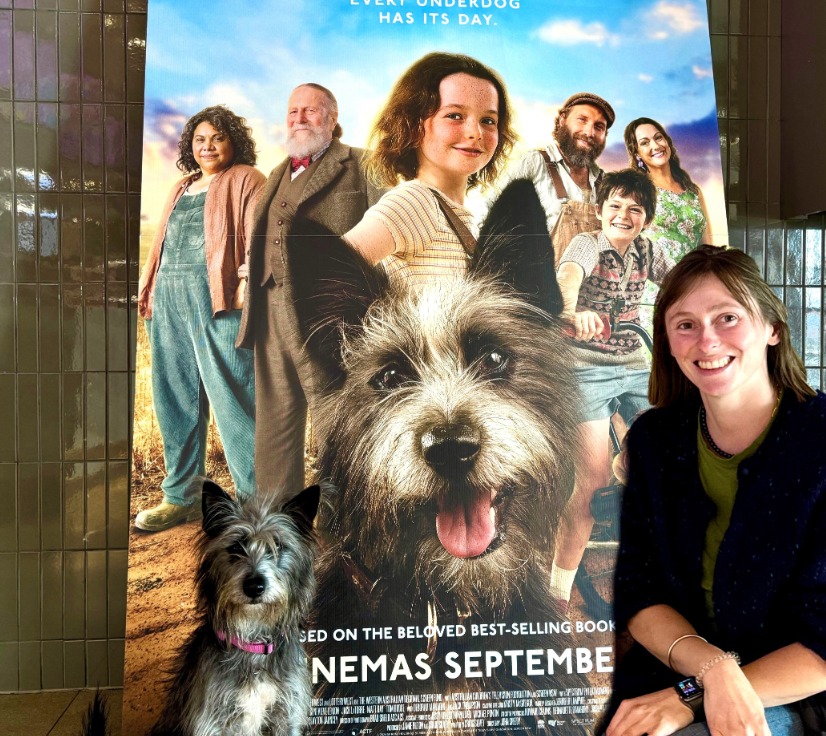
A scruffy terrier from Daylesford called Squid is about to hit the big screen as a star that rescues a drought-hit farm.
Not only that, three cats that live with Squid have been cast in a horror film.
Rebecca Faulkner, who has lived in Daylesford for seven years, spent five months hunting for a dog to play Runt in a film of the same name.
“We knew roughly what we were looking for,” says Rebecca. “We wanted a dog that would thrive and enjoy it.”
The search was online and also by word-of-mouth with animal rescue people.
“We went to see 10 to 12 dogs and searched Victoria,” she says.
Squid, “a mixed-breed mutt like some of the best ones” to train, was found in her third home.
“She was a ‘nightmare’ terrier. Terrier, terrier through to her bones. You get problem behaviour in animals just as you do in humans. I gave her a job to do.
“She could easily have become an all-day barker, easily have become the kind of dog that tears up the houses and digs up the garden.
“There was a lot of training from scratch. She needed agility and dogs’ agility is like that of Olympic athletes. They build muscles and coordination.
“Squid just had to show her agility and do a lot of specific exercises. She would have been a nightmare left to her own devices. She has very long, supermodel legs and can jump fences like they’re not even there.”
Little wonder, for the gruelling filming ran for six weeks of 10 hour days, five days a week.
“The biggest thing is building confidence,” Rebecca says.
“There was a lot of noise on the film set, with people coming and going.”
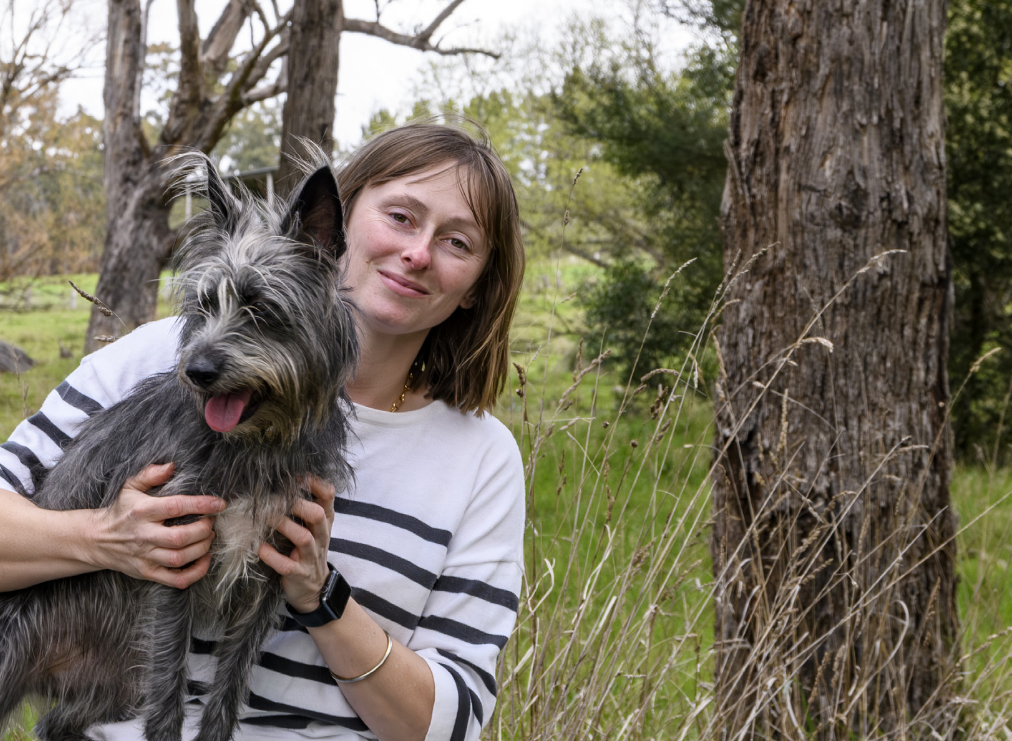
Squid, as Runt, worked with nine-year-old Annie Shearer, who overhears her parents worrying about the loan on their farm.
With her compulsion for fixing things, she enters Runt in the Agility Course Competition at a local fair. Runt wins, getting $500, so Annie goes on to enter him in the massive Krumpets Dog Show in London.
So there are hoops and hurdles, tunnels and see-saws in the film Runt, adapted from a best-selling book by Craig Silvey.
Sharing the screen with Runt are stars such as Jack Thompson, Deborah Mailman, Jai Courtney and Celeste Barber.
Rebecca, who runs a specialised business finding and training animals for film, with her Sydney business partner Peta Clarke, reckons Squid, who is aged between two and three, could be up for another film.
“She’s got a lot of experience under her collar.”
As for the cats, named Birdie, Moss and Todd River (from Alice Springs), they will be in the upcoming movie Bring Her Back.
“All our animals co-exist. They live in the same house together, except for the chickens, but sometimes they do figure out how to stroll into the house.
“It’s important that we teach all the animals how to interact with each other appropriately and co-exist without being worried about one another.
“When we filmed The Rooster, a feature film by Mark Winter that was shot around Glenlyon, the introduction of the rooster to the family/team was really smooth because we had already gone through the process of introducing dogs to cats, cats to dogs and everyone to the chickens. It’s a process that we now all understand: family doesn’t hurt family.”
But how in the name of felines do you train cats?
“Training is basically the same for all animals, tweaked to the species and the individual animal’s personality.
“When working with cats we manage the environment on set so it’s safe and calm. We do not want them to get a scare or be fearful in any way.
“We want the cats to be confident and comfortable. Just like the dogs.”
Words: Kevin Childs | Image: Michelle Donnelly
September 26th, 2024Stand by: Here come The Blockheads
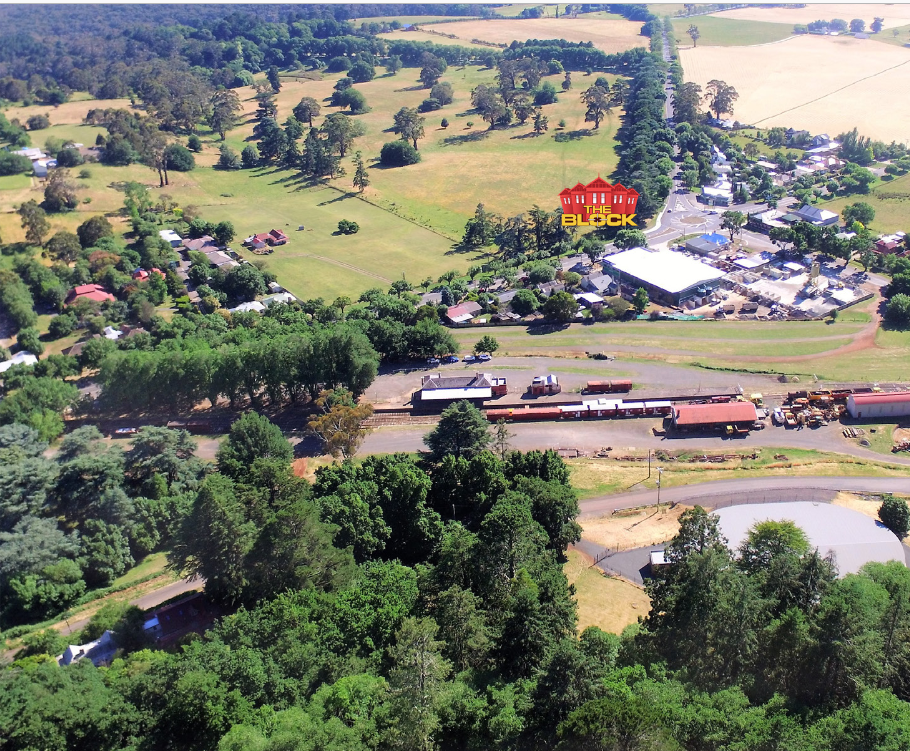
Daylesford is headed for massive exposure via TV show The Block.
Channel Nine says the 20-year-old show averages 1.3 million viewers on Sunday nights and a million on the following three nights, as well as being shown in 170 countries.
What is called pre-construction starts on the Raglan Street property this month, with filming likely to begin in February or March.
Casting started nationally last week. So far, 176 contestants have taken part in more than 900 episodes, winning more than $34 million in prize money.
For lovers of detail, there have been 98 homes renovated, 200 bathrooms built and 98 kitchens built. At least 70 crew members are expected to move to Daylesford, renting locally for three months.
Hepburn Shire Council was anxious to make soothing noises about the advent of The Block, saying it believes it will create tourism and economic development opportunities by showcasing the district to a national audience.
Asked about how the town would cope with the influx of so many crew members, with the attendant rubberneckers, the council said: “The production of The Block will enable opportunities for our tradespeople to work alongside the many cast, crew and in-house trades that will temporarily reside within our shire.”
As for the possible influx of tourists after The Block is shown, the council welcomes visitors and understands that there will be interest at the site.
“The producers of The Block will be required to have traffic management in place to ensure the safety of people on and around the site.”
As to whether the council had experience with something similar and if so, what it was and how was it handled, the council responded: “Council has experience with major festivals and events around our shire.
“We will be working with the producers of The Block to support them. We have also consulted with other councils that have had involvement with the production of various seasons of The Block.”
Words: Kevin Childs | Image: Kyle Barnes
August 1st, 2024Don is good, but out, and the show goes on

Don Harvey sharply remembers the jargon of a local council officer when he was getting involved with the Daylesford Show.
“What,” he was asked, “is your Mission Statement?” Don, pictured centre, did not miss a beat: “More dollars than last year.”
Last year, for the first time in six years, the show made a profit. Now, as the 150th show approaches in November, he looks back on his 12 years on the show committee and, as president at 79, he reckons it’s time for someone new.
His start was not great. “I thought I’d do something to help them and volunteered to paint the chook pavilion but had a heart attack which set me back three and a half years.”
Don’s background is that he went to Bendigo Junior Tech, first as a student and then to teach history until having a blow-up over the method used and moved to English.
Later he became a newsagent in Boort. His cosy Bullarto home, which he doubled in size from a holiday place built in 1978, is chokkers with books and family photos.
There he is keen to discuss the show, not himself, but when pressed tells of his time as a players’ advocate at country footy tribunals.
“Now, listen to me, I would say. I’ll do the talking. If they ask you something, don’t say there was a fight. But every time, the bloke would say, ‘He snotted me as I ran onto the ground’.”
Don moved into the gentler world of iris growing, exhibiting at the Melbourne Iris Show, so he’s naturally passionate about the Hall of Flowers in Daylesford, held in the Table Tennis Centre, with vegetables, farm and home produce joining the blooms.
Add to this 250 horses, about 100 sheep and birds and more than 400 dogs on show, plus homecrafts, music, wine, needlework, photography, food, showbags and sideshows and the picture for November 23 grows.
About 3500 people attend. There is only one event after Daylesford at which people can qualify for the Royal Melbourne Show.
Winners of an event can go to the next level at the Midlands Group, which is the doorway to Melbourne.It’s by no means a one-man show.
Don’s wife Mary compiles the detailed 20- page program, down to the cookery section, including Blokes’ Chocolate Cake and Sponge, “not iced, no filling”.
This is all part of a tradition stretching back to the first show in Hobart in 1822 and the first ploughing trials at Glenlyon in 1864.
Farmer-to-farmer innovation and education rolled out, as well as tremendous technological advances on display, from the first automated shearing machines to the start of GPS-controlled tractors.
In all of this, however, there is a heartbeat to the show, such as the one revealed by Don, who tells of being aged six or seven when he went with his father from near the rear of Cliffy’s, his sister on his father’s shoulders, up to Victoria Park.
“I walked,” he says, “and there were others walking, too, in 1952”. Don is also keen to share his view on people’s unhappiness.
“I’ve met people who make others miserable, and my approach is not to be bloody miserable in return. It is possible to talk to people and make them feel a bit better. I’ve had a few years’ practise at that.”
Besides the Show, Don is involved with the local historical society and the Friends of Wombat Hill Botanic Gardens, where he is known for his wry humour.
Which is just as well, says Patrice O’Shea, secretary of the Friends, because Don and Mary have faced health problems.
“Living and gardening in Bullarto is not for the faint-hearted. Putting aside the characteristically bleak weather, the terrible damage wrought by storms made a pretty grim prospect of trying to restore your place in what was beautiful bush,” Patrice says.
She says that as a keen seed collector Don is an inveterate optimist by nature.
“He shares his joy in plants, many of them rare, in the community and even in politics.” And we all benefit from this.”
Journalist: Kevin Childs | Image: Kyle Barnes
June 24th, 2024How Alan ‘took’ his dad to Gallipoli
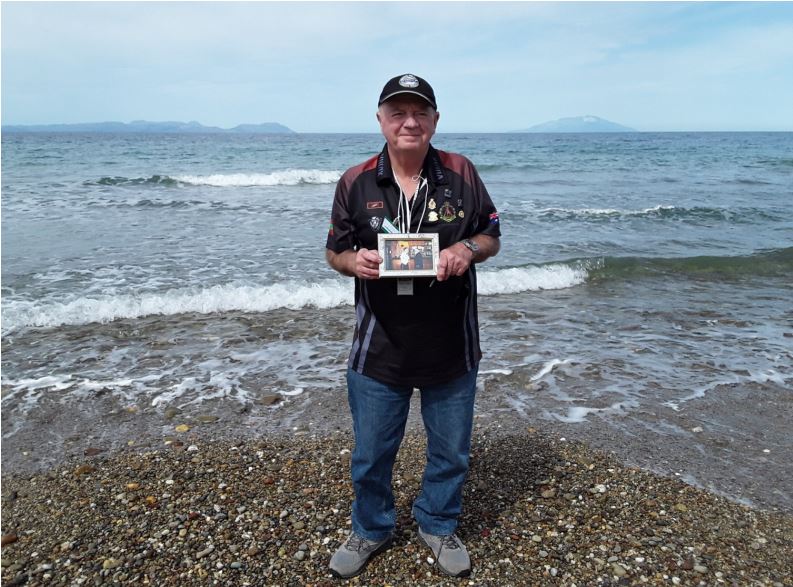
The desire to go to Gallipoli for the Dawn Service burnt strongly in Daylesford’s Alan Eaton. Major heart surgery and three operations firstly stopped him, but even when he did go it was with an undiagnosed broken leg.
His father always wanted to attend the service, but died without fulfilling his dream, so Alan ‘took’ him in the form of a treasured photo of the pair of them.
At each cemetery out came the photo. At the Anzac sector he sat on the beach. “I felt my father was standing next to me. Many people say if you don’t shed tears, you are not human.”
With him, too, were his grandfather’s medals from WWI.
To Alan’s surprise, a young girl on a pilgrimage with her father, found the grave of Corporal Alma May, son of James and Frances May of West Street, Daylesford.
Wounded by machinegun fire, Corporal May was taken to an aid station but died the next day, aged 24. His name is in the Avenue of Honour. Alan lay the medals on Corporal May’s plaque.
“The chances of finding a grave of someone from your hometown are slim,” says Alan, with some understatement.
He stood, too, at Lone Pine, where seven Victoria Crosses were awarded. To him, Gallipoli is where Australia was blooded as a nation.
His fascination with the Victoria Cross also took him to “Jacka’s Country” where Jacka the VC winner killed seven Turks in a trench by bullet and bayonet.
At Shrapnel Gully Alan saw where Simpson cheerfully earned a form of immortality as he brought down the wounded with his donkey, five of whom died before he was killed.
Alan’s family is steeped in military history, as shown by the books and pictures crowding his den. He was in the Army for 26 years until 1999.
His grandfather was seconded from the British Royal Navy in 1911 to help form the Australian Navy and fought in the first action in 1914, taking part in the capture of a radio station from the Germans in Papua New Guinea.
Alan’s father was in the artillery as part of the anti-aircraft force, guarding the steel works in Newcastle, and then in Darwin. Alan’s older brother Wallace went to Vietnam in 1970.
“I enlisted in ’74, just after Vietnam,” says Alan. He served in Malaysia, Canada and Hawaii.
Now 68, he was medically discharged from the Army, then spent 13 years as a contractor to the Defence Department. “I enjoyed it,” he says emphatically. “I would not change a step.”
Alan stoutly denies the stories that have sprung up that the Anzacs landed at the wrong place, saying there was 1.6 kilometres of land for them to come ashore.
Then there is the Turkish side. A professor from that nation told the Anzac pilgrims of their 86,000 soldiers killed, including those who charged with bayonets because they had no bullets.
“The world has learnt that a nation will fight to defend itself,” says Alan, instancing Vietnam, Korea and the Ukraine.
“The trip was all I wanted it to be.” Now he has his sights on another storied Anzac battlefield, Villers Bretonneux in France, where 2500 died saving the town.
Words: Kevin Childs | Image: Contributed
June 7th, 2024Out of despair comes … art
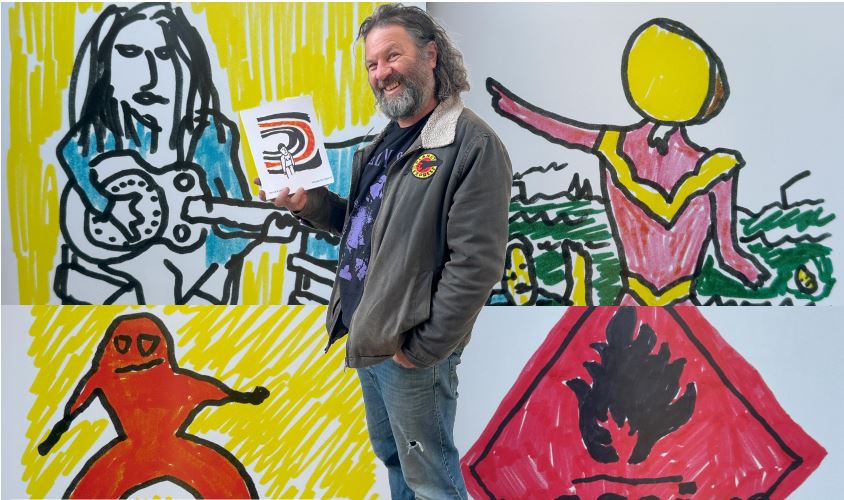
Brilliantly coloured images of rock and pop stars fill a book by Yandoit’s Dave Lewis. They arose out of extreme trauma.
He says if his wife had not heard a bump as their daughter Kate fell out of bed, she would be dead. It seemed that Kate, then 16, was having a fit. She was unable to speak.
An ambulance took her first to Ballarat, then to the Royal Melbourne Hospital. She was there for six months recovering from an aneurysm.
Dave and his wife, Sharon Treloar, moved to Melbourne to be with Kate in March last year.
“They operated on her for nine hours,” he says. She was in intensive care for weeks. “It was insane,” says Dave, a 55-year-old teacher’s aide and part-time rock muso.
Recuperation was slow. Physiotherapists helped, as did speech pathologists and helpers to take her shopping. There were setbacks. Kate had a stroke and a second, much milder, aneurysm. An aneurysm is a bulge in a blood vessel in or around the brain.
“We just took it one week at a time,” Dave says. “We were lucky that she lived.”
Now Kate can walk, but with a limp and has little movement in her right hand.
During Kate’s time in the Royal Melbourne Dave lined her white walls with Texta drawings of music legends, from Bob Dylan to Patti Smith.
Here, too, in his 136-page book are Yoshimi Battles the Pink Robots, Blue Lines, Massive Attack, Kurt Vile, and Yo La Tengo, a famously noisy American alternative rock band formed in 1984, with their 1997 album I Can Hear the Heart Beating as One. “I tried to liven it up.” Dave says.
His book will be launched at Words in Winter in August. Dave has nursed an ambition to produce an art book for 32 years and now aims for another.
Another American band in the book is one that Kate introduced him to, the Neutral Milk Hotel, formed in 1989. They split up for what seems an eccentric reason in rock: they could not cope with the attention they were getting.
Which is unlike Dave’s band The Bedridden, which also split up, got together only to split again, only to recently emerge at Yandoit.
The spirit and survival of these bands and musicians, caught on Kate’s hospital walls, may have meant a lot.
Words: Kevin Childs | Image: Kyle Barnes
May 4th, 2024Lily explores big benefits of using public transport …

Words: Kevin Childs
Public transport is a mystery for many people in Central Victoria. Yet nine buses leave Daylesford on most weekdays to link with trains to Melbourne and Ballarat.
Four go to Woodend, three to Ballarat and one to Ballan and Castlemaine, with an extra one to these last two towns on Fridays.
What’s more, concession fares for people such as seniors are $5.30 for unlimited weekday travel on train, tram or bus across Melbourne or the state. This drops to $3.60 at the weekend. And you can throw in four free travel days a year.
These insights come from Daylesford’s Lily Walden who has passionately taken up the cause of public transport by running free seminars for 70 people over five months and talking to local councillors and transport officials.
Her background in marketing services quickly becomes clear as her presentation starts. Up come reasons for using public transport: the main street of Daylesford is choked with cars, wildlife, the cost of
fuel, potholes and perhaps an attraction to beer or wine.
Then there is the ferocious freeway traffic. And the ease to reach places such as South Melbourne beach, the Victoria Market, Melbourne Zoo and films at the old Pentridge Prison.
Where it gets tricky, however, is that there are three transport ticket systems. V/Line runs trains and buses to the State border, regional services operate between V/Line and the Metropolitan system, which covers the city’s trains, trams and buses.

Daylesford passengers just need to ask for a regional extension ticket for their return journey at a station where they leave their bus.
And for people going to Ballarat for medical appointments there is even a medical zone bus. Daylesford’s buses leave from opposite the CFA in Bridport St, with the first leaving for Ballan at 6.15am. Three minutes later the Woodend bus leaves, with the Ballarat bus going at 7.15.
There is also a 7.25 to Ballarat, 10.23 to Woodend, 2pm to Castlemaine, 3.18 to Woodend, 4.45 to Ballarat and 5.23 to Woodend.
Lily explains that someone wanting to shop in Melbourne or Ballarat can easily be back in Daylesford by mid-afternoon.
And for people wanting help travelling, the century-old, free Travellers Aid offers volunteers and other support to get to appointments, events, work or education. Showers, luggage stores, and change tables are among the facilities at Southern Cross.
“They are available for everybody,” says Lily.
If public transport is not your thing, you may prefer a simpler, more energetic form of travel and do what Lily once did: walk. From Ballarat to Bendigo, as well as Hepburn to Castlemaine.
April 30th, 2024Out of the bunker, back on the green
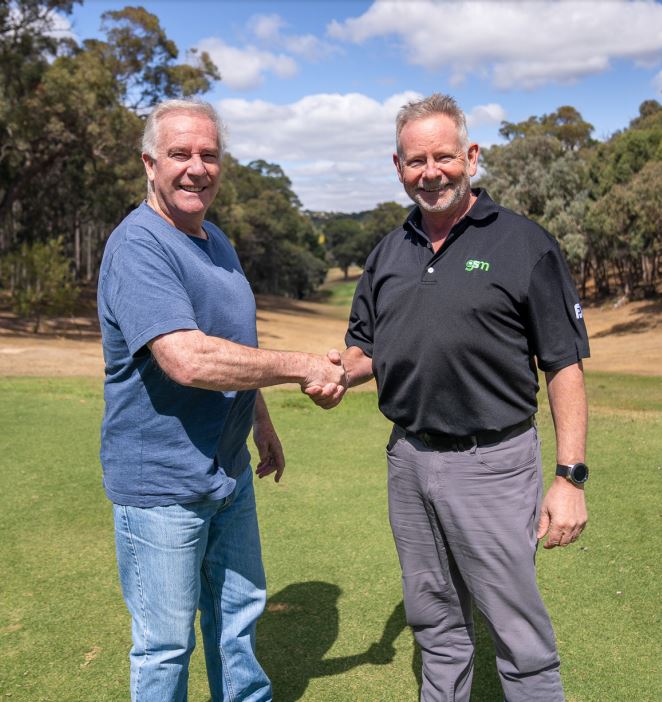
To many people, the Hepburn Golf Club is one of the district’s hidden gems. Tucked away off the main road, it’s an oasis for kangaroos as well as those out for a bit of a hit in the open air.
But it has struggled and now, after operating for almost a century, the club has become privately owned.
“We realised a year ago that we were losing money and members,” says its final president, Daylesford’s Vic Delosa. “We were facing insolvency.”
The club has been acquired by Golf Services Management (GSM), which is committed to spending a substantial amount on the course over five years. GSM runs courses across the state with a 6000-strong data base and is owned by the son of a 1980s Daylesford Primary School principal.
Vic says many people were doing a lot of work at the club, but they were getting older, tired and drifting away.
“There is an enormous amount of work in what is a $400,000 a year business and we didn’t have enough financial or human resources to turn it around.”
Over summer, Friday nights at the club showed its potential as it drew golfers and non-golfers to a First Tee evening of some glorious singing, the fun of a raffle and even indoor putting. But the club needed about 15 active people to run marketing, the clubhouse and more.
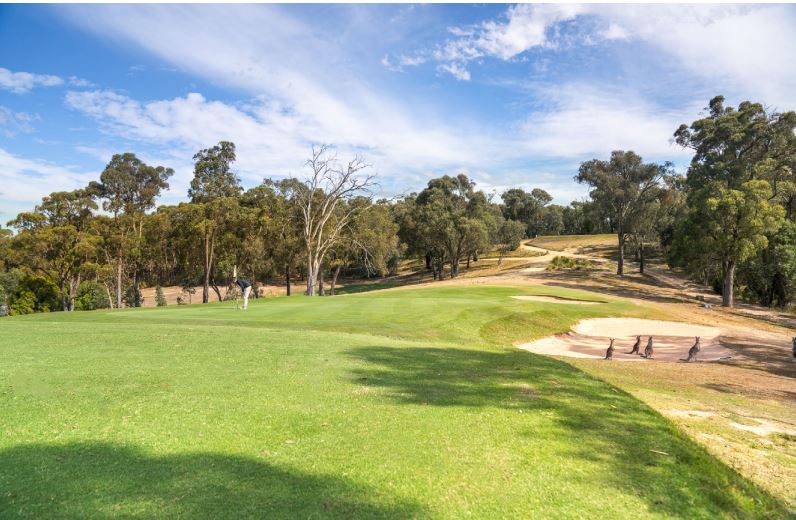
After a year in talks with GSM, the club members voted nearly 100 per cent for the change. “Clearly GSM needed to own it,” Vic adds,” because if they can’t turn it around, they can sell it to hopefully re-coup their investment.”
GSM’s owner, former professional golfer Ian Denny, was Hepburn’s junior champion in 1968. Says Vic, “I don’t think this would have happened if he didn’t have the passion and enthusiasm that comes with being a local boy.”
Among the six Victorian courses GSM runs is St Andrew’s Beach on the Mornington Peninsula, which is now ranked as Australia’s best public course.
Vic says the clubhouse and its surroundings will be improved, as well as the course, which needs work on its paths and drainage to make it more playable in winter.
Members will be offered a 25 per cent discount in fees for five years. Full membership is currently $695 a year. “The emphasis will move from competition to social golf, but not one at the cost of the other.”
We talk in the clubhouse beneath big honour boards listing decades of club champions and officials, those who scored a hole-in-one, and much more. TV screens may replace these and the club is in discussion with the Daylesford & District Historical Society to be custodians of any historical material for which the club does not have a home.
Outside, holidaying young boys are having a round, sharing one bag of clubs as the third to hit off misses his tee shot.
GSM, says Vic, is a marketing expert and will make the most of the course as one of the region’s hidden secrets. “Many people don’t even know of it.”
Golfers love visiting other courses, according to Vic, opening a largely untapped market. One idea is to offer a shortened “round” of five holes from the 14th to the 18th, taking about an hour.
Other long-term suggestions are accommodation pods where golfers can stay, and perhaps a food and drink business in the clubhouse.
“This is a win for the community: members play a better course that is better managed at no extra cost, and the council is happy and has offered to promote it.”
That is not to overlook what Vic says is the greatest asset of the club, course superintendent Darren McColl, who has been there for 37 years. He works with Paul Thomas, who has put in 18 years. They regularly work a 50-hour week. Now, more help may be on the way.
Words: Kevin Childs | Images: Contributed
February 2nd, 2024Mayhem for Megan, back on the boards
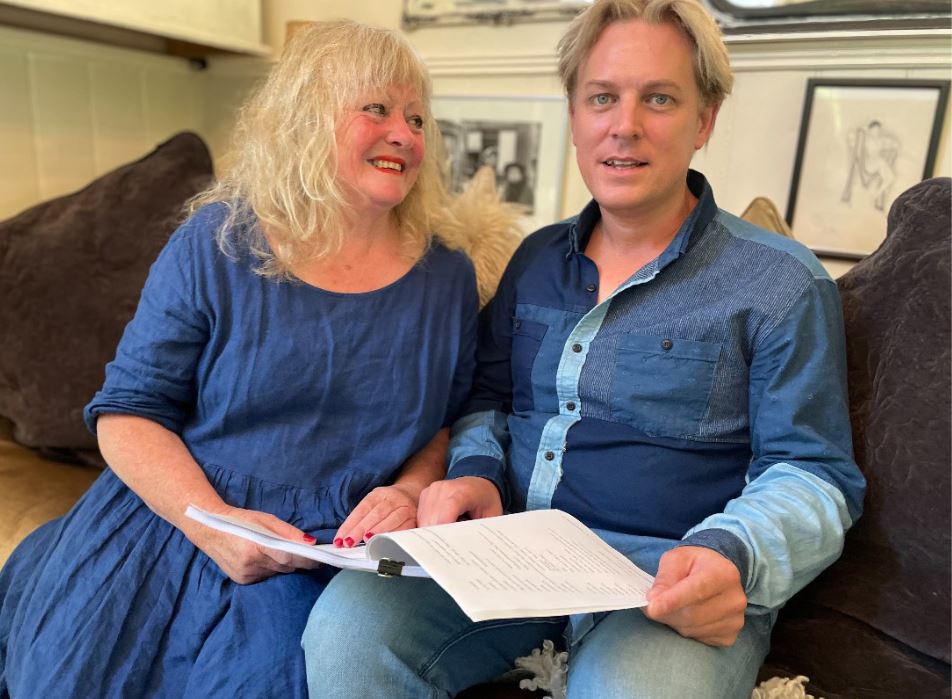
Long-time Daylesford resident Megan Jones whoops for joy as she tells of at last becoming a poster girl. At 70.
She’s on the poster for a new play by Hepburn’s Adam Fawcett. Called Every Lovely Terrible Thing, he says it is two acts of family mayhem , funny, chaotic, surprising, with ghosts and magic realism.
A prodigal daughter returns to the family home after 10 years with a secret that threatens to blow everyone up. It even has Megan bursting out of a coffin to sing Don’t Rain on My Parade.
Four years in the writing, the play is co-commissioned by Lab Kelpie, the biggest and first for the 12-year-old company since being based here.
“This shows the strength of independent artists and companies working in regional Victoria who can take a high-quality work like this and stand next to our metropolitan contemporaries.,” Adam says.
Megan’s last stage appearance was 15 years ago in a play called The Prostitute. Amazingly, she got the role after a woman asked her, while she was sitting in the foyer of the North Melbourne Arts Hub, whether she was an actor.
Her record could scarcely be more impressive: besides acting, she is a theatre and circus director, working for 40 years with a wide range of independent artists, companies and organisations, creating more than 80 original theatre shows and 20 main stage circus shows.
Trained with master teachers in London and Moscow, she founded Machination Theatre Ensemble which over the six years of its existence was picked from 60 companies to be on the VCE Drama playlist, being awarded for its contribution.
Adam, 41, says he started writing the play before meeting Megan. “When I got stuck, I went to her, and she was a mentor and gave me encouragement.”
In spite of the seeming toughness of the plot, he stresses that it is “not trauma porn”.
A third play by Adam, Men on the Verge of a Nervous Breakdown, is a finalist in the 2024 Midsumma Queer Playwriting Award, while a work of prose fiction, Black Rainbow, is a finalist in a new writing award, the Pearl Prize for 750-word pieces to be announced next month.
For her part, Megan says, “He is original in his approach, well balanced and his work is unique because I’ve never seen this topic dealt with in this way. Some people might have a cry here and there, but there’s a lot of comedy.”
Another local involved is costume designer Martelle Hunt, whose credits extend from The Lion, the Witch and the Wardrobe to Shakespeare and musicals. The birth of this play may lead to fresh projects, such as theatre classes.
Every Lovely Terrible Thing is on at Theatre Works, St Kilda, from February 29 to March 16. Tickets available from theatreworks.com.au
Story & image: Kevin Childs
November 8th, 2023Pitch perfect..

Words: Kevin Childs | Image: Kyle Barnes
When it comes to playing soccer, many children learn bad habits. Lee Stevens wants to put them right. At 38, this Coomoora resident with two young children understands how some parents may struggle to coach their offspring.
He has set up a part-time soccer academy for youngsters in Daylesford and is pleased with the enthusiasm he has encountered, even though it only began two weeks before the latest school term.
The soccer season ends in August, leaving kids with nothing to do until February.
“That is where I come in. Parents are keen for their kids to be active and not in front of screens or on phones.”
When we talked, he has had five coaching sessions involving more than 100 children in the holidays, with local coaches helping, for which he’s grateful.
Next month it will be the turn of “little kickers” aged four to seven. Term four sees sessions for under eights and under 12s.
Otherwise, he says, his coaching is about structure and keeping it basic. When it comes to his academy, however, his passion bubbles over.
“Every child has a ball: there’s no waiting and no queuing. Make it fun and they listen. They learn and develop and, who knows, they might take it further.”
Lee runs birthday parties as well, with 90 minutes of entertainment and refreshments. A fair way from playing in front of 60,000 fans at Wembley Stadium.
His soccer story is one that possibly many from his home town of Swindon in England could but dream of. He began playing for Southampton before being chosen for England Youth, playing mostly mid-field and in defence. A scholarship took him to South Carolina, USA.
All the while he was coaching, having started at 16. “That was generally young to
start,” he says, “but I had a passion for it and wanted to give it a go. It essentially kept me involved in the game all year long.”
California drew Lee seven years later to continue coaching for Ventura CountyFusion Soccer Club, which plays in the Professional Development League, before moving to Melbourne in 2015. His Wembley Stadium game was for the FA Vase, competed for by 600 teams in the lower ranks of the English football league.
Away from the game he started working in recruitment and in 2020 launched his own Melbourne firm, Vivid Recruitment, specialising in architecture, engineering and construction.
And how does he get youngsters interested? Lee says marketing is involved and it’s important to get parents interested. “They need to see the benefits. Most of the children have mentioned it to friends (word of mouth) because they had lots of fun. Also my experience is unique for the area and this has a lot of weight.
“Generally if you keep it fun and light hearted, they are good as gold.”
His group sessions last 60 minutes and one-on-one is 45 minutes. “They’re varied sessions, but always structured with a warm up, ball skills, fun games and then small-sided games. Essentially we coach soccer fundamentals because it’s really lacking in the area and at grassroots. You are unable to progress in your game if you cannot control or pass a ball.”
Lee is also doing tailored coaching in the junior section of the national premier league. “It was meant to be small, but has taken off, which is not a bad thing.”
When he’s not coaching he straps on his gear for Daylesford Seniors, for whom he’s “scored some goals”.
Now he slips into his boots, while wearing the academy jersey, complete with ad logo (“The kids will eventually get them”). He readies training equipment. Next up is a 12-year-old, keen for a one-on-one session to sharpen his game.
September 14th, 2023Wombat State Park on its way, finally
Words: Kevin Childs
Signs are emerging that the long-promised Wombat State Park may become a reality.
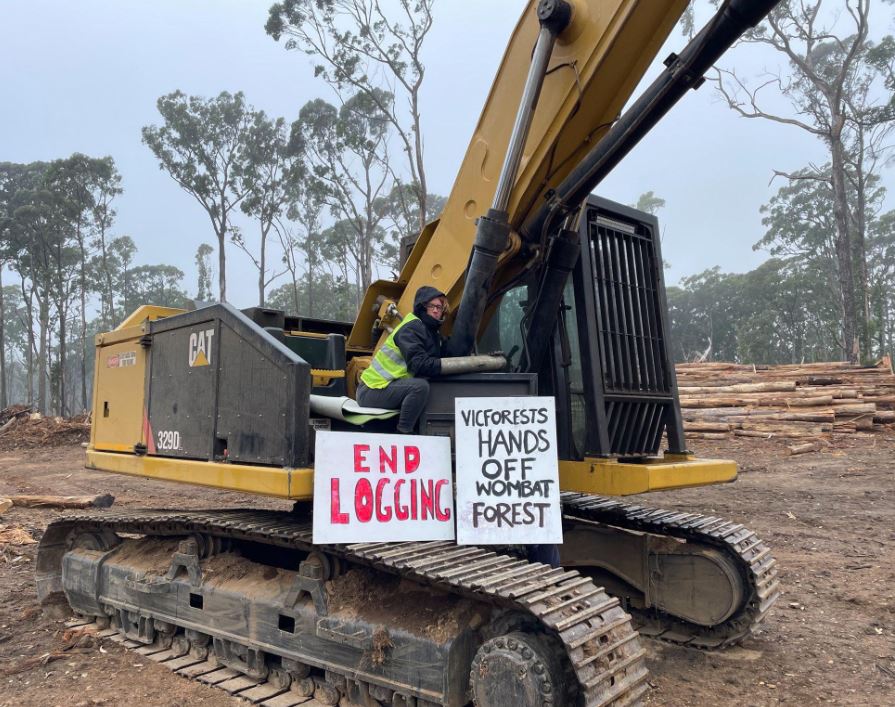
This comes at a time when the State Government prepares to break up its logging business VicForests. The business lost an unprecedented $52.4 million in the last financial year, blaming the cost on legal actions by community environment groups which stopped logging.
VicForests has been roundly criticised in the Supreme Court, which upheld logging bans.
The court found VicForests breached environmental protection laws by logging the habitat of endangered greater gliders and yellow-bellied gliders. A judge said “serious or irreversible harm” had been caused to the gliders.
The Wombat State Forest is also home to the vulnerable brush-tailed phascogale, carnivorous marsupials.
The government’s decision was greeted by Gayle Osborne, convenor of Wombat Forestcare, as a small step towards dismantling VicForests. “It is not soon enough for the Wombat Forests,” she said “We still have VicForests causing massive environmental damage.”
VicForests’ heavy industrial logging in Central Victoria is blamed by environmentalists for heightened bushfire danger. Research shows that fallen trees from the 2021 storm raise fire risk because of the regrowth of dangerous fire fuel, with Ms Osborne pointing to the ferocity and carnage in the fires of Hawaii, Canada and Greece.
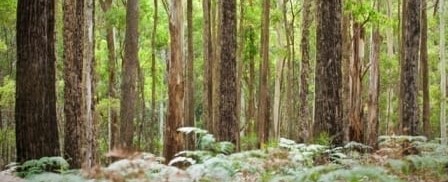
Ms Osborne said that after the 2021 storm, 175 logging coupes were set up over the Wombat area and Cobaw, near Hanging Rock. Starting at Babbington Hill, every big tree was to be removed, beginning with 8000 square metres at Babbington.
“This was ‘overseen and regulated’, but the forest does not have a lot of protection,” she said. “Working under forest fire management, the Department of the Environment cleared 80 to 100 metres each side of every track, taking out every large tree. Piles of bark and small fuel were left, endangering the bush.”
VicForests, which harvests and sells timber, is to be split into different government departments, easing great concern over native logging. This worry grew when the Victorian Environmental Assessment Council (VEAC), set up to provide independent advice, recently held three small “storm debris community meetings”, at Blackwood, Bullarto and Barkstead. The meetings were seen as an attempt to get community agreement to salvage logging and timber harvesting.
Environmental groups and scientists, including some from Daylesford and beyond, combined to set up a mobile field observation base to record any impact on endangered species. Dozens of people have been involved.
Locally, eagles’ nests at Babbington Hill, near Lyonville, have been threatened by log salvaging.
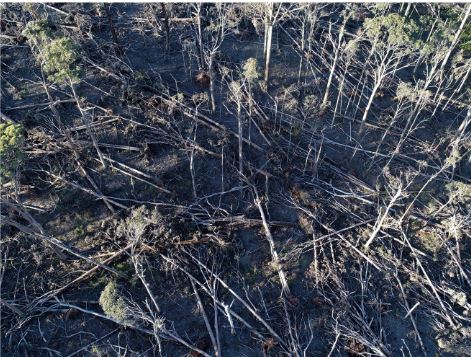
August 4th, 2023The Old Heppy to become someone’s home
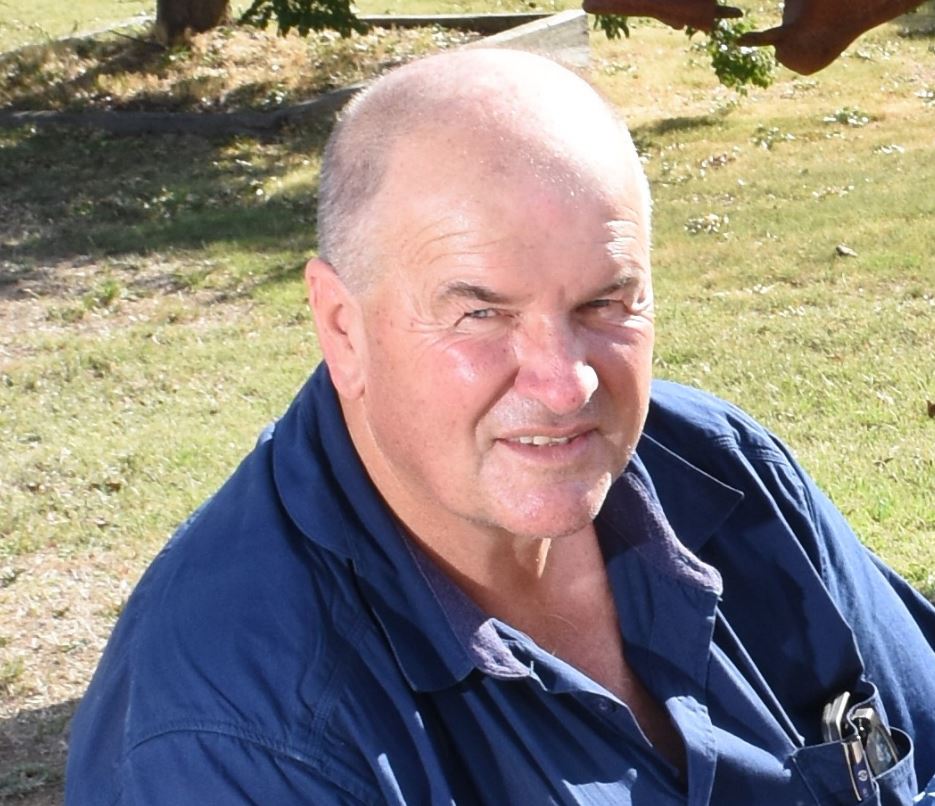
Words: Kevin Childs
LOVED by many for its music, eccentricity and atmosphere, the Old Hepburn Hotel upset many locals when the taps were turned off and doors shut three years ago.
Now, one of the new owners of the hotel and its land, local businessman Eddy Comelli (pictured above) says the hotel will become a house. “It’s zoned as residential and is to be sold soon,” he told The Local.
Bare soil around the heritage-protected hotel signals seven building blocks, plus three dwellings, making 11 residences, including the hotel, in a horseshoe- shaped area. The homes will be around the hotel that served the community almost continuously for 165 years.
Mr Comelli said a company had been formed but declined to name his partners. When the Old Hepburn shut it was threatened with demolition, but the Hepburn Shire Council obtained protection in the face of some locals saying the place should be pulled down. One suggested just a memorial plaque.
Using expert advice, the council found that the hotel “is of local historical significance as an example of the vernacular timber stores and hotels which sprung up along the principal routes to the goldfields around Hepburn and Daylesford in the mid-19th century”. Other local examples are Daylesford’s Beppe Restaurant, the Cosmopolitan Hotel in Trentham and the Swiss Mountain Hotel at Blampeid.
The Old Hepburn was the site of the first licensed store in 1854, serving Swiss Italian and Chinese goldminers digging in the nearby Breakneck Gorge until the late 19th century. As the rush ended, the village of Hepburn, and the Old Hepburn, emerged as a centre for the agricultural, horticultural and service industries.
Rebuilt in 1911 after it burnt down in 1906 and 1909, the hotel has a design that still resembles the 1860s building, incorporating fabric from the Victorian brick chimneys.
Included in the protection order is a requirement for external paint colours to either suit the building or be reinstated. Heritage Victoria says the hotel meets its threshold for listing and will be consulted on any work undertaken.
The council hoped that allowing further use of the building could contribute to its restoration and conservation.
In protecting the hotel, the council also said: “The application of the heritage overlay on a permanent basis may have an adverse economic impact by constraining development of the site. However, this would only apply to part of the property, with opportunities to develop the balance still able to be explored.”
As well, retention and conservation of the hotel could lead to “highly resolved and innovative architectural solutions.” Rather than someone’s home, as is now happening, the council believed that the old hotel would be “making opportunities for small business with benefits through tourism”.
“It is considered that economic effects will be offset by the contribution that the heritage place offers to the broader community and economy.”
Keeping a watchful eye on this is Cr Lesley Hewitt, who says one of the key conditions is protection of the cellar. Already, an ancient and unprotected pear tree behind the hotel is gone. Having twice arisen from the ashes, the pub that refused to die will now play host to new owners, their relatives and friends.












